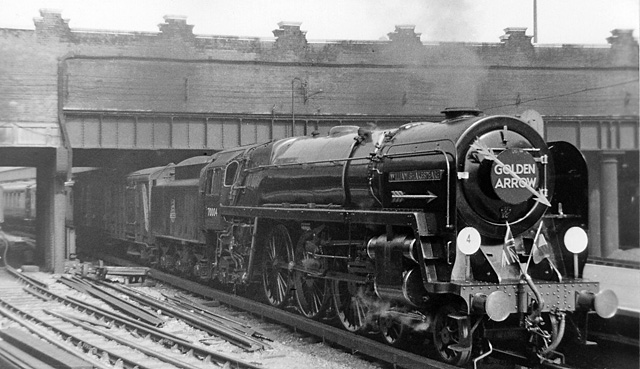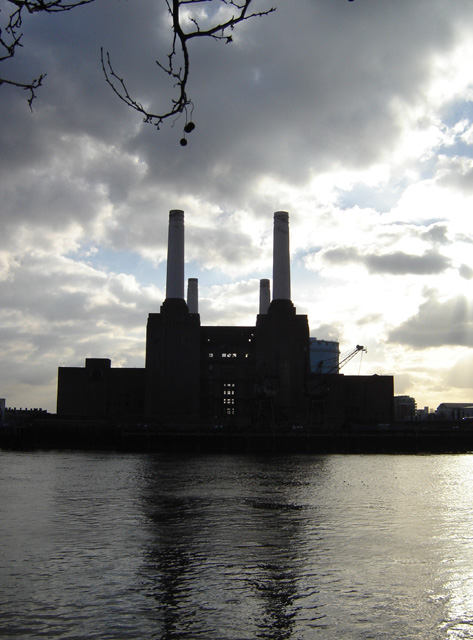|
Stewarts Lane Railway Stations
Stewarts Lane (sometimes Stewart's Lane, with an apostrophe) was the name of two separate railway stations in Battersea, South London. The first station, opened by the West End of London and Crystal Palace Railway, was on the line between and stations, located just south of the bridge under the LSWR lines. It was opened on 29 Mar 1858 and closed on 1 December 1858. The second station was later used by the London, Chatham and Dover Railway The London, Chatham and Dover Railway (LCDR or LC&DR) was a railway company in south-eastern England. It was created on 1 August 1859, when the East Kent Railway was given parliamentary approval to change its name. Its lines ran through Lond ... and located between Victoria and . This station was opened on 1 May 1863 and closed on 1 January 1867. It was located south of the previous station, at the end of Corunna Road (now Corunna Terrace). It had two staggered platforms; from the footbridge that joined them, the eastern platfor ... [...More Info...] [...Related Items...] OR: [Wikipedia] [Google] [Baidu] |
West End Of London And Crystal Palace Railway
The West End of London and Crystal Palace Railway (WELCPR) was an early railway company in south London between Crystal Palace station and Wandsworth, which was opened in 1856. The line was extended in 1858 to Pimlico station at Battersea Wharf, near the bridge to Pimlico. Throughout its brief existence the railway was operated by the London Brighton and South Coast Railway (LB&SCR) to which it was leased in 1858 and sold in 1859. This relatively short line was of considerable importance to the history of railways of south London as it was the first line to create a corridor from the south and east towards Westminster and led to the development of London Victoria railway station. History Opening To coincide with the reopening of the Crystal Palace at Sydenham Hill on 10 June 1854, the LB&SCR opened a short spur line linking a new Crystal Palace station to Sydenham station on the Brighton Main Line from London Bridge. The WELCPR was an independent company that aimed to creat ... [...More Info...] [...Related Items...] OR: [Wikipedia] [Google] [Baidu] |
London Victoria Station
Victoria station, also known as London Victoria, is a central London railway terminus and connected London Underground station in Victoria, in the City of Westminster, managed by Network Rail. Named after the nearby Victoria Street, the mainline station is a terminus of the Brighton Main Line to and and the Chatham Main Line to and Dover via . From the main lines, trains can connect to the Catford Loop Line, the Dartford Loop Line, the Sutton & Mole Valley lines to and the Oxted line to and . Southern operates most commuter and regional services to south London, Sussex and parts of east Surrey and south-east Hampshire while Southeastern operates trains to south-east London and Kent, alongside limited services operated by Thameslink. Gatwick Express trains run direct to Gatwick. The London Underground station is served by three lines: Circle, District and Victoria. On the Circle and District lines, the station is between Sloane Square and St James's Park statio ... [...More Info...] [...Related Items...] OR: [Wikipedia] [Google] [Baidu] |
Railway Stations In Great Britain Opened In 1863
Rail transport (also known as train transport) is a means of transport using wheeled vehicles running in tracks, which usually consist of two parallel steel rails. Rail transport is one of the two primary means of land transport, next to road transport. It is used for about 8% of passenger and freight transport globally, thanks to its energy efficiency and potentially high speed.Rolling stock on rails generally encounters lower frictional resistance than rubber-tyred road vehicles, allowing rail cars to be coupled into longer trains. Power is usually provided by diesel or electric locomotives. While railway transport is capital-intensive and less flexible than road transport, it can carry heavy loads of passengers and cargo with greater energy efficiency and safety. Precursors of railways driven by human or animal power have existed since antiquity, but modern rail transport began with the invention of the steam locomotive in the United Kingdom at the beginning of the 19th ... [...More Info...] [...Related Items...] OR: [Wikipedia] [Google] [Baidu] |
Wandsworth Road Railway Station
Wandsworth Road is a station on the Windrush line of the London Overground, located between Battersea and Clapham in South London. It is from . History Chatham lines The station opened on 1 March 1863, on the London, Chatham and Dover Railway (LCDR) original double-track low-level route from Victoria via Stewarts Lane, which was opened between Victoria and Herne Hill, on 25 August 1862. The LCDR constructed a triple-track high-level route between Battersea Pier Junction and Brixton, part of which opened between Factory Junction, (100 metres north of Wandsworth Road station) and Brixton on 1 May 1866, together with three additional platforms at Wandsworth Road. Therefore, from May 1866 until April 1916, this station had five platforms. In 1879 the LCDR was running the following services that stopped at Wandsworth Road: * Frequent trains between Moorgate and Victoria, calling at all stations * Half-hourly trains between Moorgate and Clapham Junction, calling at all stations * ... [...More Info...] [...Related Items...] OR: [Wikipedia] [Google] [Baidu] |
Railway World
''Railway World'' was an English-based monthly magazine covering rail transport in Great Britain. Founded by GH Lake in 1939 as ''Railways'', in 1940 it was taken over by JW Fowler and renamed ''Railway World''. It was sold to Ian Allan Publishing in 1959. Ian Allan Publishing The final edition was published in February 2003, it was superseded by '' Railways Illustrated
''Railways Illustrated'' is a British monthly railway magazine. Aimed at railway enthusiasts, it includes news, detail of stock changes, tours, and more.
Founded in 2003 by Ian Allan Publishing, it was published by Key Publishing from 2012 ... '' t ...
[...More Info...] [...Related Items...] OR: [Wikipedia] [Google] [Baidu] |
Battersea Railways - Macaulay 1863
Battersea is a large district in southwest London, part of the London Borough of Wandsworth, England. It is centred southwest of Charing Cross and also extends along the south bank of the Thames Tideway. It includes the Battersea Park. History Battersea is mentioned in the few surviving Anglo-Saxon geographical accounts as and later . As with many former parishes beside tidal flood plains the lowest land was reclaimed for agriculture by draining marshland and building culverts for streams. By the side of this was the Heathwall tide mill in the north-east with a very long mill pond regularly draining and filling to the south. Battersea () appears in the Domesday Book of 1086 in Surrey within the hundred of Brixton () as a vast manor held by St Peter's Abbey, Westminster. Its ''Domesday'' assets were: 18 hides and 17 ploughlands of cultivated land; 7 mills worth £42 9s 8d per year, of meadow, woodland worth 50 hogs. It rendered (in total): £75 9s 8d. Price inflation w ... [...More Info...] [...Related Items...] OR: [Wikipedia] [Google] [Baidu] |
London, Chatham And Dover Railway
The London, Chatham and Dover Railway (LCDR or LC&DR) was a railway company in south-eastern England. It was created on 1 August 1859, when the East Kent Railway was given parliamentary approval to change its name. Its lines ran through London, and northern and eastern Kent, to form a significant part of the Greater London commuter network. The company existed until 31 December 1922, when its assets were merged with those of other companies to form the Southern Railway (Great Britain), Southern Railway as a result of the Big Four (British railway companies), grouping determined by the Railways Act 1921. The LCDR was always in a difficult financial situation and went bankrupt in 1867, although it was able to continue to operate. Many of the difficulties were caused by the intense competition and duplication of services with the South Eastern Railway, UK, South Eastern Railway (SER). In 1898, the LCDR agreed with the SER to share the operation of the two railways, working them ... [...More Info...] [...Related Items...] OR: [Wikipedia] [Google] [Baidu] |
Ian Allan Publishing
Ian Allan Publishing was an English publisher, established in 1942, which specialised in transport books. It was founded by Ian Allan. In 1942, Ian Allan, then working in the public relations department for the Southern Railway at Waterloo station, decided he could deal with many of the requests he received about rolling stock by collecting the information into a book. The result was his first book, ''ABC of Southern Locomotives''. This proved to be a success, contributing to the emergence of trainspotting as a popular hobby in the UK, and leading to the formation of the company.Ian Allan…the man who launched a million locospotters '' The Railway Magazine'' issue 1174 February 1999 pages 20-27 The company grew from a small producer of books for train enthusiasts and spotters to a large transport publisher. Each year it published books covering subjects such as military and civil aviation, naval and maritime topics, buses, trams, trolleybuses and steam railways, includi ... [...More Info...] [...Related Items...] OR: [Wikipedia] [Google] [Baidu] |
Batsford Books
Batsford Books is an independent British book publisher. Batsford was founded in 1843 by Bradley Thomas Batsford. For some time it was an imprint of Pavilion Books. Upon the purchase of Pavilion Books by HarperCollins, on 1 December 2021, B. T. Batsford Ltd once again became an independent publishing house, with Pitkin as an imprint. Polly Powell, former owner of Pavilion Books, became the owner of Batsford Books and John Stachiewicz was appointed chairman. Harry Batsford, nephew of the founder Bradley Thomas Batsford, was the chairman but also an author for the company writing at least 11 books on English architecture and countryside (some reprinted into the 21st century). Many were co-authored by Charles Fry, Chief Editor and a director of the company. During the Depression years after 1928 there was a period when the firm tried to rely just on their books, illustrated by Batsford's nephew Brian Cook. A prominent chairman of the firm from 1952 until 1974 was Brian Batsford, kno ... [...More Info...] [...Related Items...] OR: [Wikipedia] [Google] [Baidu] |




